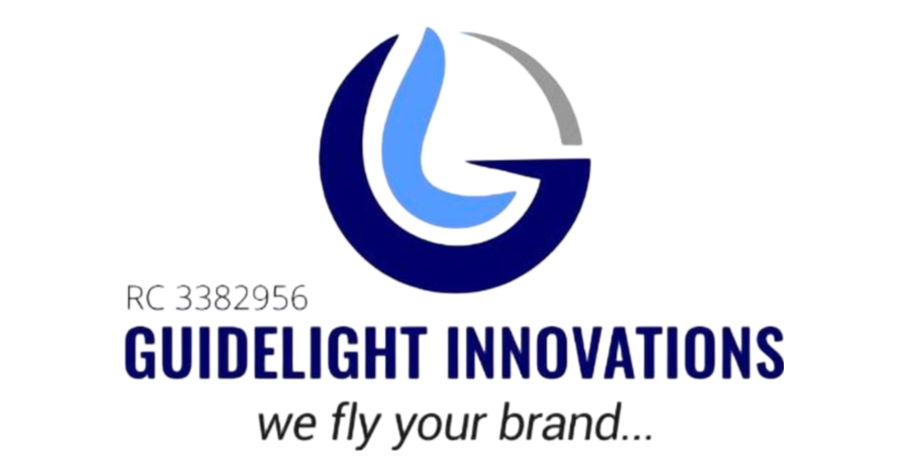Every Monday morning, Sarah does the same thing. She opens her laptop, pulls up her competitors’ websites, scrolls through their social media, and scrutinizes their latest campaigns. She’s convinced that if she can just figure out what they’re doing right, she’ll finally crack the code to growing her e-commerce business.
Three months later, her customer acquisition costs are still climbing, and her conversion rates remain stagnant.
Sarah isn’t alone. Across boardrooms and startup offices worldwide, business owners are obsessing over their competitors while completely missing the real problem: they don’t understand their customers well enough. This blind spot is costing businesses thousands—sometimes millions—in lost revenue, and it’s entirely preventable.
The Competitor Obsession Trap
Here’s an uncomfortable truth: your competitors aren’t keeping you from success. Your lack of customer understanding is.
According to research from HubSpot, 42% of companies don’t survey their customers or collect feedback systematically. Meanwhile, these same companies spend countless hours analyzing what their competitors are doing. It’s like studying your neighbor’s garden while your own plants are dying from neglect.
This competitive blind spot manifests in several ways:
Copycat Marketing: You see a competitor running Facebook ads with a specific message, so you create similar ads. But you don’t know if those ads are actually working for them, what audience they’re targeting, or whether that message resonates with your specific customers.
Feature Obsession: A competitor launches a new product feature, and you immediately add it to your roadmap. But did your customers actually ask for this feature? Will it solve a real problem for them, or are you just playing catch-up?
Pricing Wars: Your competitors drop their prices, so you match them. Now you’re competing on price rather than value, eroding your margins without understanding what your customers truly value about your offering.
The blind spot here isn’t about ignoring competitors entirely—it’s about letting competitive analysis overshadow customer insight.
The Real Competition: Customer Indifference
While you’re watching your competitors, your potential customers are scrolling past your ads, abandoning their carts, and choosing to do nothing at all. That’s right: your biggest competitor isn’t the business across the street or the well-funded startup in Silicon Valley. It’s customer indifference.
A study by Bain & Company found that 80% of companies believe they deliver superior customer experience, but only 8% of their customers agree. This massive perception gap represents the true blind spot in modern marketing.
Consider this scenario: Three fitness apps exist in the market. App A obsessively studies Apps B and C, matching their features and undercutting their prices. Meanwhile, all three apps are losing potential customers to the same enemy: people who download the app, use it twice, and then forget it exists.
The real battle isn’t between the three competitors—it’s between each app and the customer’s inertia, lack of motivation, competing priorities, and dozens of other fitness apps they’ve downloaded and abandoned before.
Uncovering Your Marketing Blind Spot
So how do you identify and fix this blind spot? It starts with shifting your focus from competitive intelligence to customer intelligence.
1. Map the Actual Customer Journey
Most businesses think they know their customer journey. They’ll sketch out something like: Awareness → Consideration → Purchase → Loyalty. But this generic framework is itself a blind spot.
Your customers don’t follow textbook journeys. They take messy, non-linear paths influenced by emotions, circumstances, and countless micro-moments you’re probably not tracking.
Start by talking to real customers—not just the happy ones. Interview people who:
- Almost bought but didn’t
- Bought once but never returned
- Abandoned their cart
- Chose a competitor (yes, competitors matter here, but as context, not obsession)
Tools like Hotjar or FullStory can reveal where people actually click, scroll, and abandon on your website. Often, the blind spot isn’t in your strategy—it’s in the execution details you’ve never thought to examine.
2. Identify the Jobs Your Customers Are Hiring You For
Harvard professor Clayton Christensen introduced the “Jobs to Be Done” framework, which fundamentally shifts how we think about customer needs. Customers don’t buy products; they “hire” them to do a job.
This perspective reveals blind spots that competitive analysis never could. For example:
- People don’t buy drill bits because they want drill bits (or because a competitor sells them). They buy drill bits because they need holes.
- People don’t hire a gym membership because competitors offer one. They hire it to feel better about themselves, to have a routine, or to meet social needs.
When you understand the actual job your customer is trying to accomplish, you stop competing on features and start delivering real value. Your competitors might offer similar products, but if you understand the job better, you win—regardless of what competitors do.
3. Listen to What Customers Say (and Don’t Say)
There’s a dangerous blind spot in how most businesses collect customer feedback: they only listen to direct feedback while ignoring behavioral data.
Direct feedback (surveys, reviews) tells you what customers think they want. Behavioral data (what they actually click, buy, and abandon) tells you what they truly value. Often, these two things don’t align.
Gartner research shows that 95% of companies collect customer feedback, but only 10% use it effectively to improve customer experience. The blind spot isn’t in collecting data—it’s in synthesizing it into actionable insights.
Create a systematic approach:
- Use tools like SurveyMonkey or Typeform for structured feedback
- Monitor social media mentions and sentiment with platforms like Sprout Social
- Analyze support ticket themes using tools like Zendesk
- Track behavioral analytics through Google Analytics or Mixpanel
The blind spot closes when you combine what customers say with what they do.
Why Customer-Centric Marketing Beats Competitor-Focused Strategy
In today’s hyper-competitive landscape, many brands make a critical mistake — they build their marketing strategy around what competitors are doing instead of what customers actually need. The truth is, you don’t win markets by obsessing over rivals. You win by understanding and serving your audience better than anyone else.
Customer-centric marketing isn’t about reacting to what others launch — it’s about proactively solving real human problems, anticipating desires, and removing friction at every stage of the customer journey. It transforms marketing from a battle for attention into a system for delivering genuine value.
Let’s look at some powerful real-world examples of companies that shifted from competitor-focused to customer-obsessed — and won big.
Dollar Shave Club: Solving for Frustration, Not Fighting for Features
Dollar Shave Club didn’t beat Gillette by creating a superior razor or outspending them on R&D. Gillette had the brand prestige, patents, and massive shelf space — all traditional “competitive advantages.”
But Dollar Shave Club saw what Gillette didn’t: a customer blind spot.
People were frustrated with overpriced razors and the hassle of buying them in stores. The pain wasn’t in the product — it was in the experience.
By introducing a subscription model that delivered affordable razors straight to customers’ doors, paired with witty, relatable marketing, they flipped the script. Instead of competing on features, they competed on convenience and personality. Their viral launch video didn’t talk about blades per inch — it talked about saving time, money, and sanity.
The result? A billion-dollar exit to Unilever and a complete disruption of the personal grooming market.
Dollar Shave Club didn’t just sell razors. They sold a better experience — because they paid attention to the customer’s everyday frustrations, not the competitor’s product updates.
Slack: Turning Boring Work into a Joyful Experience
Slack entered a market already filled with communication tools — email, chat apps, and project management software. But instead of obsessing over how to out-feature those tools, Slack zoomed in on how people felt using them.
The insight was simple yet profound: workplace communication was broken.
It was fragmented, impersonal, and often stressful. Teams were juggling multiple tools, missing messages, and feeling disconnected.
While competitors added complexity — more integrations, more buttons, more dashboards — Slack did the opposite. They removed friction and added delight.
Their tone was human, their UX intuitive, and their notifications friendly. It felt less like enterprise software and more like a product made by people who actually understood how teams work.
Slack didn’t just sell a messaging tool — they sold a better way to work together.
Their success came from empathy, not imitation. They didn’t try to beat competitors at their game; they changed the game entirely.
The Lesson: Empathy Wins Over Analysis
Both Dollar Shave Club and Slack demonstrate that the most powerful marketing strategy isn’t competitive — it’s empathetic.
Competitive analysis has its place. You should know what others in your industry are doing — but it shouldn’t define your roadmap.
Your biggest opportunity doesn’t lie in outperforming your rivals’ campaigns; it lies in understanding your customers more deeply than your rivals ever will.
When you build your marketing strategy around customer insight — their frustrations, desires, routines, and emotional triggers — you stop chasing the competition and start creating your own category.
That’s the true competitive advantage in 2025 and beyond.
The Framework: Customer-Centric Digital Marketing
Here’s a practical framework to shift from competitor-focused to customer-focused digital marketing:
Phase 1: Deep Customer Research (Weeks 1-4)
Stop looking at your competitors’ websites and start talking to your customers. Conduct at least 15-20 customer interviews with:
- Recent purchasers
- Long-time customers
- People who considered buying but didn’t
- Former customers who churned
Ask about their decision-making process, hesitations, alternative solutions they considered (including doing nothing), and what would make them advocate for your brand.
Use Calendly to schedule these conversations and record them (with permission) for later analysis.
Phase 2: Identify Your Blind Spots (Weeks 5-6)
Analyze your research to find patterns. Common blind spots include:
- Messaging misalignment: What you think is your value proposition vs. what customers actually value
- Channel mismatch: Where you’re marketing vs. where your customers actually discover solutions
- Friction points: Obstacles in the customer journey you didn’t know existed
- Unmet needs: Problems your customers have that you could solve but aren’t addressing
Create a “Blind Spot Audit” document that lists assumptions you’ve been making about your customers that turned out to be wrong.
Phase 3: Realign Your Marketing (Weeks 7-12)
Now rebuild your marketing strategy based on customer insights:
Content Strategy: Create content that addresses actual customer questions and concerns, not just SEO keywords your competitors are targeting. Use tools like AnswerThePublic to discover real questions people are asking.
Channel Selection: Focus on channels where your customers actually spend time and are receptive to your message. If your research shows customers discover solutions through podcasts, don’t pour all your budget into display ads just because competitors are.
Messaging Framework: Develop messaging that speaks to the actual jobs customers are hiring you for. Your competitors might talk about features; you’ll talk about the transformation customers experience.
Experience Optimization: Fix the friction points you discovered. This might mean simplifying your checkout process, improving your onboarding, or clarifying your pricing—changes that have nothing to do with what competitors are doing but everything to do with what customers need.
Phase 4: Test, Measure, and Iterate (Ongoing)
Create a systematic approach to continuously uncover new blind spots:
- Monthly customer feedback sessions
- Quarterly customer journey mapping updates
- Regular analysis of drop-off points in your funnel
- A/B testing based on customer insights, not competitive benchmarks
Tools like Optimizely or VWO can help you test variations, but make sure you’re testing hypotheses based on customer understanding, not just copying what competitors do.
The Metrics That Matter (Hint: They’re Not About Your Competitors)
Another major blind spot: the metrics most businesses track.
If you’re obsessively tracking competitive metrics—market share relative to competitors, feature parity, pricing position—you’re measuring the wrong things. These metrics tell you where you stand relative to competitors, but they don’t tell you if you’re creating value for customers.
Instead, focus on customer-centric metrics:
Customer Lifetime Value (CLV): How much value does each customer create over their entire relationship with you? If this is increasing, you’re deepening customer relationships regardless of what competitors do.
Net Promoter Score (NPS): Would customers recommend you? This metric, developed by Bain & Company, correlates strongly with business growth and customer satisfaction.
Customer Effort Score (CES): How easy is it for customers to accomplish their goals with your product or service? Lower effort scores predict higher loyalty.
Retention Rate: Are customers sticking around? Retention is almost always more profitable than acquisition, yet many businesses have a blind spot around customer retention in favor of new customer acquisition.
Time to Value: How quickly do customers experience the value of your product or service? If this window is too long, customers churn before they ever become advocates.
These metrics force you to focus on customer success rather than competitive positioning. Ironically, when you excel at these customer-centric metrics, competitive advantages naturally emerge.
When Competitive Analysis Actually Matters
Let’s be clear: I’m not suggesting you completely ignore your competitors. That would create a different blind spot.
Competitive analysis matters in specific contexts:
Market Positioning: Understanding what competitors offer helps you identify white space and differentiation opportunities. But this should be informed by customer needs, not just competitive gaps.
Pricing Context: Knowing competitor pricing provides context, but your pricing should be based on the value you deliver to customers, not just competitive parity.
Industry Trends: Monitoring competitors helps you spot industry shifts early. If multiple competitors are moving toward a new technology or approach, it might signal a market evolution you need to understand.
Sales Enablement: Your sales team needs to understand competitive differences to address customer questions. But again, this should be in service of helping customers make informed decisions, not just “beating” competitors.
The key difference: use competitive intelligence as context for customer-focused decisions, not as the primary driver of strategy.
Closing Your Marketing Blind Spot: An Action Plan
Ready to shift from competitor-obsessed to customer-focused? Here’s your 30-day action plan:
Week 1: Audit your current marketing efforts. How much time and resources go toward competitive analysis vs. customer research? Be honest about the ratio.
Week 2: Schedule and conduct five customer interviews. Use a consistent set of questions to uncover blind spots in your understanding of customer needs, decision-making processes, and pain points.
Week 3: Analyze the interview data for patterns. Create a list of assumptions you’ve been making that turned out to be wrong. These are your blind spots.
Week 4: Choose one significant blind spot to address. Develop a hypothesis about how addressing it will improve customer experience and business results. Create a test to validate your hypothesis.
Then repeat this cycle continuously. The businesses that win aren’t the ones who monitor competitors most closely—they’re the ones who understand and serve their customers better than anyone else.
The Bottom Line
Your competitors aren’t your real problem. They’re a convenient distraction from the harder work of truly understanding your customers.
The blind spot that’s costing you customers isn’t about what your competitors are doing better—it’s about the gaps in your understanding of what your customers actually need, want, and value.
When you close this blind spot, something remarkable happens: you stop worrying so much about competitors because you’re creating unique value that’s hard to replicate. You’re not playing the same game everyone else is playing; you’re playing a different game entirely—one where you understand your customers so well that competitive pressure becomes less relevant.
So this Monday morning, instead of opening your laptop to check your competitors’ websites, open it to schedule customer conversations instead. The insights you gain will be worth far more than anything you’ll learn from competitive analysis.
After all, your competitors are probably too busy watching each other to notice the blind spot that’s costing all of you customers. Don’t make the same mistake.
Want to dive deeper into customer-centric marketing? Start by implementing the 30-day action plan above. Document your discoveries, track your metrics, and watch as shifting focus from competitors to customers transforms your marketing effectiveness. The blind spot you close today could be the competitive advantage you need tomorrow—just not in the way you expected.
References and Further Reading
- HubSpot – Customer Feedback and Survey Statistics: https://www.hubspot.com
- Bain & Company – Customer Experience Research: https://www.bain.com
- Gartner – Customer Feedback and Experience Management: https://www.gartner.com
- Christensen, Clayton – Jobs to Be Done Framework
- Hotjar – User Behavior Analytics: https://www.hotjar.com
- FullStory – Digital Experience Intelligence: https://www.fullstory.com
- Google Analytics – Web Analytics Platform: https://analytics.google.com
- Mixpanel – Product Analytics: https://mixpanel.com
- Optimizely – Experimentation Platform: https://www.optimizely.com
- VWO – A/B Testing and Conversion Optimization: https://vwo.com




